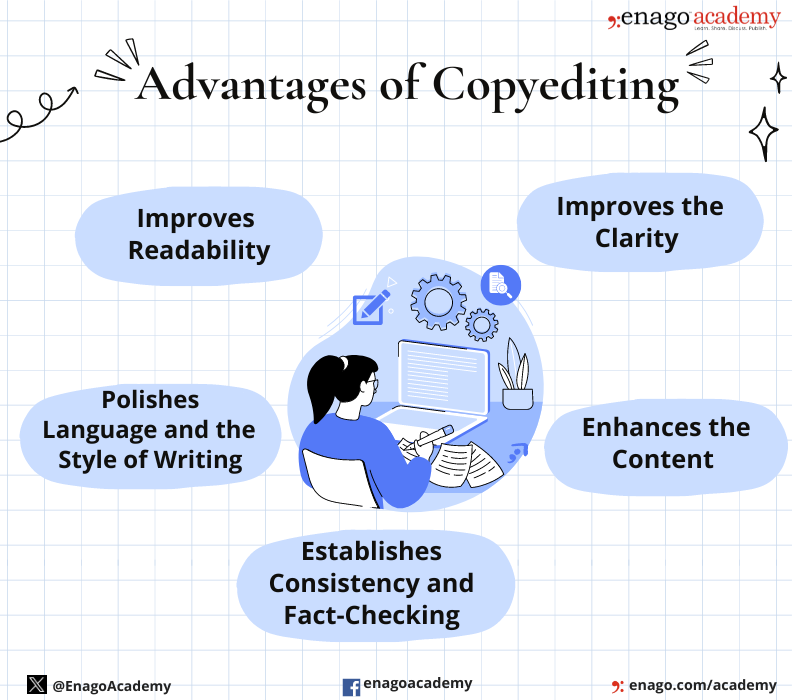Difference Between Copyediting and Proofreading
Difference Between Copyediting and Proofreading
Copyediting and proofreading are often used interchangeably, leading to confusion about their different roles. Proofreading is usually done in the final stages of editing to check grammar and punctuation. It is done for a quality check of the document. Although both the steps are crucial to ensure accuracy of the text, each of them serves a different purpose.
Here’s a tabular comparison between copyediting and proofreading:
Copyediting |
Proofreading |
| Improves the overall clarity and quality of content | Corrects errors in grammar, spelling, and style |
| Involves a comprehensive checking of content and style | Involves a limited checking; which is primarily focused on surface errors |
| Looks for grammar, punctuation, syntax, style and consistency | Checks spelling, punctuation, and formatting |
| Ensures consistency in adherence to the style guide | Ensures consistency in language and formatting |
| Organizes the logical flow and coherence of the content | Does not review or modify content |
| May rephrase or reorganize sentences | Focuses on corrections without rewriting the sentence |
| Typically done before proofreading | The final step, after copyediting |
| Improves the manuscript’s readability and quality | Ensures accuracy |
| Uses style guides, dictionaries, and references | Focuses on proofreading marks and details |
| Prepares the document for publication or submission | Polishes the document for errors before publication |
| Copyeditors are hired for copyediting | Proofreaders are hired for proofreading |
Remember that although copyediting and proofreading have distinct roles, they are often part of the same editorial process, with copyediting preceding proofreading. The two processes work together to ensure a high-quality, error-free document.
Advantages of Copyediting
Copyediting makes the document more readable by adding a logical flow to the text. Additionally, it offers comprehensive revision, language and style polishing, consistency checks, and content enhancement that goes beyond the scope of traditional proofreading.
Some advantages of copyediting are as follows:

1. Improves Readability
Copyediting delves deep into the content and makes the text more coherent. The step examines clarity and consistency of the text. Furthermore, it fixes the overall structure, organization of ideas, and flow of the writing, and ensures that the message is conveyed effectively. By addressing issues related to logic, copyediting improves the overall readability of the document to grab the reader’s interest to your text.
2. Polishes Language and the Style of Writing
Copyediting refines the language and style of the text. It ensures that the writing is concise and suitable for the intended audience. Furthermore, it improves the sentence structure, word choice, and grammar, resulting in a more polished and professional output.
3. Establishes Consistency and Fact-checking
Inconsistencies in writing can distract the readers and undermine the authority of your content. Copyediting fixes these issues by ensuring consistency in spelling, punctuation, capitalization, and formatting throughout the text. Moreover, it includes fact-checking to verify the accuracy of information in the content. This establishes credibility and minimizes the risk of misinformation in the material.
4. Improves Clarity
One of the primary goals of copy editing is to enhance clarity and coherence of writing. A copy editor will rephrase or restructure sentences that are ambiguous. Additionally, they bridge gaps in the content to make it more logical and cohesive. This eliminates the scope for any confusion for readers; thus, making the document more engaging and enjoyable to read.
5. Enhances the Content
Copyediting elevates the overall quality of the content. It polishes the content and style, and increases the overall impact of the manuscript.
